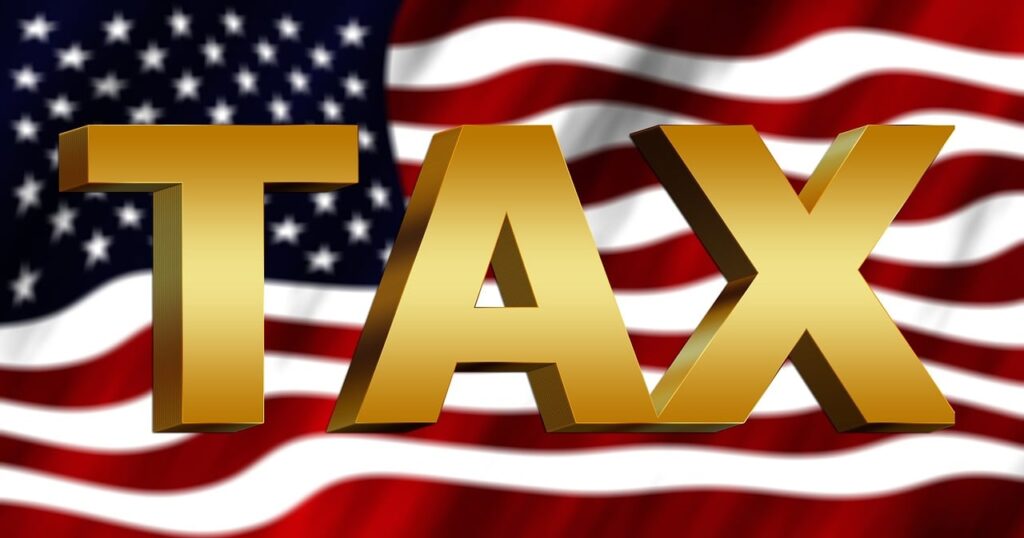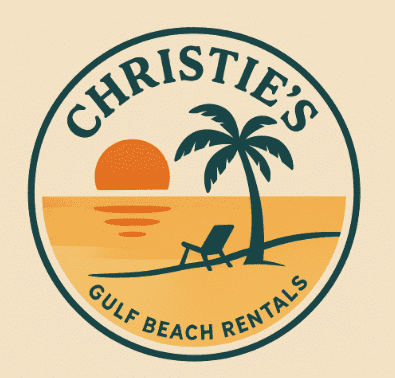Last updated on August 26th, 2025 at 04:15 am
You have a 401 (k) or traditional IRA, and you are retired or approaching retirement. It’s time to create a strategy to maximize income and reduce tax liability. I am amazed at how many times I engage in a discussion with someone who has done nothing with their 401 (k) after retirement. Many companies require 401 (k) funds (and retirement ROTH 401 (k) plans) to move out (roll over) of their control into your own traditional IRA using a brokerage. Beyond doing that, most people do not have a clue. All of that will change in this article. I would like to see you fully prepared for your first year of retirement.
Many people seek help from a financial advisor, which is a good idea, but first, I believe you need to improve your financial literacy. You should seek to understand what an advisor is recommending. To break down this subject into bite-sized chunks, I will start by explaining the basic process of retirement and individual retirement account management, and what happens to your accounts when you pass. This article is written around a typical employer-sponsored retirement plan, such as a 401(k), traditional IRA, and Roth IRA accounts.
Self-employed SEP IRA
A SEP IRA is a retirement plan similar to a 401(k) for self-employed individuals. I will not discuss this plan specifically, other than to say that most of what is mentioned below will apply to this type of plan, as it does to other employer plans. Read this article that discusses self-employed individuals.
Assuming that you have a 401(k) plan with your employer, you will want to select a brokerage to move your funds to when you leave your employer. Some large brokerage houses are Charles Schwab, Merrill Lynch, Fidelity, Vanguard, and others. Start by opening your brokerage account. This is a standard account where you can deposit funds you have paid tax on and purchase mutual funds, stocks, treasury funds, and more. You can also park your cash in a high-yield money market fund.
Next, tell the brokerage that you will need to open a Traditional IRA with funds from your 401(k). At this point, contact your former employer and request a transfer of the balance of funds to your new Traditional IRA at the new brokerage. You will not receive any money; the funds will go from one financial institution to the other. This process retains your tax-deferred accounts intact.

Start investing after retirement funds are transferred
After the funds are transferred, you will need to make some investments, such as buying mutual funds, etc. If you like, you may be able to select the same fund groups that you owned in the 401(k) or do some research with the brokerage tools to find a better match with your goals. The brokerage can provide assistance upon request.
I will not venture into how to invest your funds here. You can work it out through research or working with an advisor. If you decide to work with an advisor, select a “fiduciary” firm. A fiduciary firm will work in your interest as they do not earn a commission on trades. Their income comes from the fees they charge you. I will however, recommend that you look into exchange-traded funds, as the commissions charged are usually lower and they can be just as profitable as any other type of fund.
If you have no idea at first what to do with your funds, on day one, move them to the highest-yielding money market fund that permits access to the funds. As of the date this is written, Charles Schwab is paying just above 5.15% interest monthly on their money market fund SWVXX. Most large brokerages are paying a competitive amount.
Never just let money sit
Never let your money just sit. Money has to work for you, earning the highest yields at the level of risk that is acceptable to you.
Now to the financial planning aspect of your retirement accounts. First, you should know that your 401(k) and tax-deferred IRA were created to help you save money for retirement. Now you are in retirement or planning for it. It’s time to empty those accounts. What do I mean by “empty”? Those accounts are not the best way to hold assets after age 55 with no employment income. I strongly recommend that you open a ROTH IRA and you need not wait until you are retired to do that. Let me explain what a Roth IRA is.
Roth IRA
This is an account that you open at a brokerage alongside your rolled-over tax-deferred IRA. In fact, for those of you still employed, your employer may offer a Roth IRA as part of their retirement program along with a standard 401(k). The Roth IRA allows you to deposit up to a specified maximum amount each year.
This account accepts funds that have already been subject to income taxes. All funds in the Roth IRA will grow over time, generating dividends and/or value. When you remove any of those funds, you will pay zero federal income taxes. Of course, there are rules, such as holding the income earned for at least 5 years.
Your 401(k) or Traditional IRA permits tax-deferred deposits each year. When you remove funds from these accounts after age 59.5, the funds will be subject to federal and possibly state income tax. The Roth IRA withdrawals are not subject to Federal income taxes. Your retirement funds are there when you need them, and many retirees do not need the funds initially upon retiring.
Drain your 401(k) and Traditional IRA
This is why it’s important to ensure you begin to drain your 401(k) and Traditional IRA at a rate that fits your retirement plans. Taking too much out will increase your potential tax obligation. Creating a plan to drain the funds at a specific rate over the years can help you significantly reduce your potential taxes.
Ok, I will be draining the 401(k) and the Traditional IRA, so where do I put the funds? Move the maximum possible to the Roth IRA after withdrawing from your taxable brokerage accounts. As of this writing, you can make Roth IRA contributions of up to $8,000 into your Roth IRA investment account in 2024 and 2025.
This assumes you are age 59 1/2 or older. $8,000 may not be enough to meet your goals to drain your Traditional IRA retirement income account. If you can afford to withdraw, for example $20,000 from your traditional IRA, deposit the excess funds into your brokerage account.

Max your deductions by withdrawing IRA funds
To clarify, you have decided that you have sufficient tax deductions to support adding $20,000 withdrawn from your Traditional IRA to your other taxable retirement income, and you will be able to cover any taxable amount. You have determined that taking out more than $20,000 would cause a tax liability that is too great. Not a problem, you stop at $20,000, deposit $8,000 in your Roth IRA, and the other $12,000 into your brokerage account.
Now you have to invest the $20,000 you have placed into your brokerage account and Roth IRA. Why not select the same funds, stocks that these funds were already invested in, assuming that you had previously made good investment decisions? Better yet, you can do what is called an “in-kind” rollover. With this process, you contact your brokerage and tell them to move the investments from your rollover traditional IRA to the Roth and brokerage accounts. They can do this without selling the investments, which will save you money.
Employer stock and dividends
Are you sitting on company stock and dividends? Many people have received company stock, and some of that stock may be earning dividends. As I mentioned above, money should always be working. While you were an employee, you may have been required to hold the stock for a period of time. Assuming that period is expired when you retire, why hold that stock if there are better investments out there?
I fully understand the idea that the stocks are a connection with your former employer, but that is no reason to hold them. If you have accumulated cash from dividends in that account, either reinvest in the company shares if possible or withdraw the funds and put them into your Roth IRA or brokerage account, where they can be invested.
Always look at investment returns. Never invest in emotion. Buying a stock because you like its logo color or the way it supports some political party is never a good strategy. Past performance is only an indicator of future performance.
The annual IRA contribution limit increases each year
Back to the idea of draining those old accounts and investing in a Roth IRA. The annual contribution limit increases each year for all types of retirement accounts. Keep increasing deposits into your Roth account each year. Another part of the strategy is to avoid removing funds from your Roth IRA account because you will not be able to replace them.
There is only one exception, and then only once per year. You can remove funds from your Roth IRA using a “60-day rollover”. This means you can take funds out, but must replace the funds within 60 days. If you are late, there is a penalty. This is an emergency only.
Don’t use your Roth IRA as a bank account. The idea is that all income earned will never be taxed, so you will want to earn as much as possible by reinvesting. If you are married, your spouse can open a Roth IRA where you can deposit an additional $8,000 per year.
Required Minimum IRA Distribution
When you turn 73, you will be subject to your first RMD. The IRS will require you to make mandatory withdrawals (Required Minimum Distributions) from your 401(k) or rollover traditional IRA. No such requirement exists for a Roth IRA (after-tax dollars). What I recommend to people who are subject to the mandatory withdrawal from their tax-deferred retirement savings account is to place the funds into their Roth IRA.
Some retirees do not need the funds immediately but prefer to keep their nest egg untouched. Those required minimum distributions can be a way to just move funds from one taxable income account to the Roth IRA or brokerage account. This way, you comply with the IRS requirements and keep on track with your investment strategy.

Tax liability
Time to cover taxes. The more you pay in taxes, the less you can invest. Incorporating tax strategy into your overall retirement strategy is very important. Starting with the IRS tax tables in 2024, note that you can earn up to $16,550 and pay not more than 10%. Actually, the tax table is misleading. A married couple over 65 will receive a $30,000 standard deduction. This means that you will likely not pay any income taxes unless you show income over the standard deduction.
The next bracket is only 2% higher at 12% up to $63,100. When considering how much to remove from your tax-advantaged account, check out the lower tax brackets. Consider the time value of money. The more you have to invest earlier, the more you will earn. Here is an example. You have $200,000 in your qualified retirement plans 401(k) and/or traditional IRA.
These funds should be earned through growth and dividends. The more you earn, the higher the amount of taxes you will be subject to over time. At the $200,000 grows to $220,000, you will pay tax on that $20,000.
Here is a chart of the current federal tax brackets for the “Married Filing Jointly” status in the U.S. for the 2024 tax year:
| Tax Rate | Taxable Income (Married Filing Jointly) |
|---|---|
| 10% | $0 to $22,000 |
| 12% SWEET SPOT FOR RETIREES | $22,001 to $89,450 |
| 22% | $89,451 to $190,750 |
| 24% | $190,751 to $364,200 |
| 32% | $364,201 to $462,500 |
| 35% | $462,501 to $693,750 |
| 37% | Over $693,750 |
These brackets are adjusted annually for inflation, so make sure to verify this information as needed for tax filing purposes.
Hit the 12% or 22% tax bracket
You have calculated that you can withdraw $50,000 for the next four years and the balance in year five. Your federal taxes would be based on the 12% rate. If you withdraw $100,000 in year one, your tax rate climbs from 12% to 22%. A big difference. You can see that creating a plan to reduce your gross income and thus tax rate is the best plan. Over a five-year plan, you would have moved $40,000 of the $200,000 to your Roth IRA. In year 5, that $40,000 could have earned $3,200 without any tax liability (invested at 8%).
The remaining $160,000 would have been transferred to the brokerage account, where prudent investment strategies would have increased your account balance. Eventually, all of these funds would be moved to your Roth IRA, earning income without any federal income tax liability.
As long as your retirement income from Social Security and other sources is sufficient to maintain your desired lifestyle, you may wish to leave your retirement portfolio largely untouched. Manage your retirement portfolio on your own or hire an investment adviser.
Before I close this article, I wanted you to understand the implications of your retirement accounts on your heirs. Individual retirement accounts are personal. The IRS has rules about how they are handled after the owner passes. It’s important if you believe you will outlive your retirement accounts that you make provisions for your heirs to inherit your money with the lowest tax liability and least effort.
The following explains what happens with each type of retirement account when you pass.
Roth IRA
Beneficiary Types:
- Spouse: If the spouse inherits the Roth IRA, they have the most flexibility. They can:
- Treat it as their own: The spouse can roll over the Roth IRA into their own Roth IRA and avoid any mandatory distributions during their lifetime.
- Leave it as an inherited Roth IRA: The spouse can keep the Roth IRA as a separate account and take distributions following the inherited Roth IRA rules (explained below).
- Non-Spouse Beneficiary: If a non-spouse inherits the Roth IRA (children, other relatives, etc.), they are subject to Inherited Roth IRA Rules:
- Five-Year Rule: Generally, the entire balance of the Roth IRA must be withdrawn by the end of the fifth calendar year following the year of the original owner’s death. There are exceptions for certain beneficiaries, like minor children or those disabled before reaching age 18.
- Ten-Year Rule (Before 2020 deaths): For deaths before 2020, beneficiaries had up to 10 years to withdraw the funds. This rule no longer applies to new inheritances.
- Life Expectancy Rule (Eligible Designated Beneficiaries): If the beneficiary is an “eligible designated beneficiary” named by the original owner (generally a spouse, minor child, disabled or chronically ill beneficiary, or someone not more than 10 years younger than the original owner), they can take withdrawals over their life expectancy.
Important to Remember:
- No Required Minimum Distributions (RMDs) for Original Owner: Unlike traditional IRAs, Roth IRAs don’t have RMDs while the original owner is alive. This benefit extends to spouses who inherit and treat the Roth IRA as their own.
- Taxes: Qualified distributions from a Roth IRA (contributions and earnings that grew tax-free) are generally tax-free for beneficiaries. However, any earnings withdrawn from the account before the five-year requirement (or ten years for pre-2020 deaths) may be subject to income taxes.
Traditional IRA
Beneficiaries:
- Spouse: Spouses have the most flexibility. They can:
- Rollover the IRA: They can roll the entire traditional IRA into their own traditional IRA. This avoids any immediate tax implications and allows them to postpone required minimum distributions (RMDs) until they reach their own RMD age (usually 73).
- Become the Beneficiary: The spouse can keep the IRA as an inherited traditional IRA and take distributions following the inherited IRA rules (explained below).
- Non-Spouse Beneficiary: If a non-spouse inherits the traditional IRA (children, other relatives, etc.), they are subject to Inherited IRA Rules:
- Required Minimum Distributions (RMDs): Inherited IRAs generally have RMDs starting in the year after the original owner’s death. Beneficiaries must begin withdrawing a minimum amount annually based on their life expectancy.
- Ten-Year Rule: Beneficiaries generally have ten years from the date of the original owner’s death to withdraw all the funds from the inherited IRA. However, there are exceptions for certain beneficiaries, like minor children or those disabled before reaching age 18. They may be able to stretch out the withdrawals over their life expectancy.
Tax Implications:
- Traditional IRAs are tax-deferred: Contributions are made with pre-tax dollars, but withdrawals are taxed as ordinary income. This applies to beneficiaries as well.
- RMDs and Taxes: When beneficiaries take RMDs from inherited traditional IRAs, they pay income taxes on the withdrawn amount.
401(k)
Beneficiary Designation:
- Crucial Step: Ensure your 401(k) plan has a designated beneficiary on file. This avoids probate and directs the funds to your intended recipient(s). You can name a primary beneficiary and contingent beneficiaries in case the primary is unable to receive the funds.
Beneficiary Types:
- Spouse: Spouses have the most flexibility:
- Rollover to Their Own IRA: They can roll the entire 401(k) into their own IRA account. This avoids immediate tax implications and allows them to postpone RMDs until their own RMD age (typically 73).
- Become the Beneficiary: The spouse can keep the funds in the deceased’s 401(k) and take distributions following inherited 401(k) rules (explained below).
- Non-Spouse Beneficiary: If a non-spouse inherits (children, other relatives, etc.), they are generally subject to Inherited 401(k) Rules:
- Required Minimum Distributions (RMDs): Similar to inherited IRAs, beneficiaries must start taking RMDs typically in the year following the account owner’s death. The RMD calculation is based on the beneficiary’s life expectancy.
- Ten-Year Rule: Beneficiaries generally have ten years from the date of the owner’s death to withdraw all funds from the inherited 401(k). There are exceptions for certain beneficiaries, like minor children or those disabled before reaching age 18. They may be able to stretch out withdrawals over their life expectancy.
Tax Implications:
- 401(k)s are tax-deferred: Contributions are made with pre-tax dollars, and beneficiaries pay income taxes on withdrawn funds.
What to do if you have an existing 401k with an old employer
If you have forgotten about your old 401 (k) and your previous employer did not require it to be moved, you may want to. As mentioned above, you can contact your old employer and get the process started for a move to your own account. Seek advice if you need to for how to invest the funds. Keep that money working for you and under your control.https://www.bankrate.com/retirement/401k-rollover-guide/#existing-401k
Thank you for visiting RetireCoast.com. We are not consultants or lawyers, or CPA’s. You may need one or more of this group. We provide information to help you understand some of the more complex areas of taxes, accounting, investing, and more. You should always do some research before you contract for professional services. Why pay your attorney to tell you the basics? Use your money on specifics.
IMPORTANT NOTE:
The tax brackets and large standard deduction for seniors will expire on December 31, 2024, unless Congress extends them. “The Tax Cuts and Jobs Act” of 2017 should be extended. Contact your elected officials and tell them you want the bill extended.
Use any of the information we have provided, but understand that the world is constantly changing, and the information we provide here starts becoming old the minute it is published.
https://www.irs.gov/retirement-plans/401k-resource-guide
Frequently Asked Questions
Living in Mississippi offers low housing costs, affordable healthcare, and a slower pace of life. The warm climate and friendly communities make it attractive for retirees. On the downside, wages and job opportunities can be limited, and parts of the state experience extreme weather like hurricanes and humidity.
Some of the best Mississippi communities for seniors include Ocean Springs, Pass Christian, and Bay St. Louis. These Gulf Coast towns combine affordable housing, medical access, and vibrant cultural scenes. Many seniors also enjoy Gulfport for its amenities and proximity to beaches.
On average, retirees in Mississippi can live comfortably on $45,000–$55,000 per year, depending on lifestyle. Housing is about 30% lower than the national average, and Mississippi exempts Social Security income from state taxes. This makes it one of the most affordable retirement states.
Yes. Mississippi is considered retirement friendly because of its low cost of living, no state tax on Social Security, and relatively mild winters. Retirees also benefit from affordable real estate and a variety of cultural and outdoor activities along the Gulf Coast.
The “$20 method” is a slot machine strategy where a player inserts $20 into multiple machines and plays a set number of spins, cashing out quickly if they win. It is more of a budgeting tactic than a guaranteed winning method, and results vary widely.
Popular retirement businesses include consulting, property management, online stores, and service businesses such as bookkeeping or home repair. The best choice depends on your skills, interests, and how hands-on you want to be during retirement.
Yes. Many entrepreneurs launch businesses later in life with great success. Experience, professional networks, and financial stability often give older entrepreneurs an advantage. Examples include real estate investing, consulting firms, and small service businesses tailored to local communities.
Discover more from RetireCoast.com
Subscribe to get the latest posts sent to your email.









